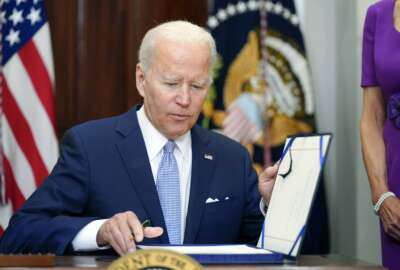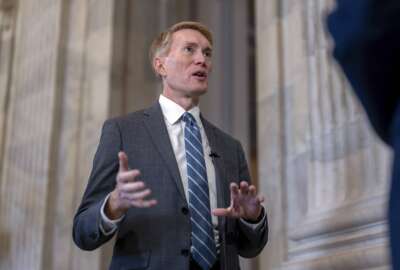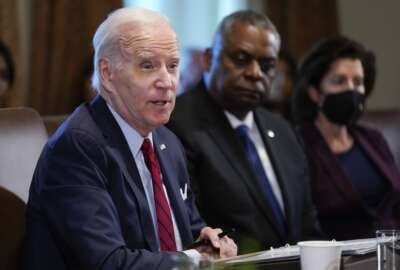For federal workforce training must be the top priority
New book highlights possible way forward to change HR system
wfedstaff | June 2, 2015 8:05 pm
By Jason Miller
Executive Editor
FederalNewsRadio
The federal government needs to stop looking at employees as an overhead cost. They must be looked at as a critical asset to meeting agency mission, says Scott Gould, the new deputy secretary at the Veterans Affairs Department.
Gould, who will be sworn in today, says the government spends $700 billion a year on pay and benefits, or about 25 percent of the federal budget, and employees’ needs must be addressed in a way that reflects that investment.
And Gould will be in the perfect position to lead this effort.
He would not offer any insight into his plans at VA, saying he didn’t feel comfortable speaking on behalf of the agency until he was officially sworn in.
But Gould offered a glimpse of what he may do at VA. He spoke at an event April 7 highlighting the book he co-authored with Linda Bilmes, a professor at Harvard’s Kennedy school of government, at the National Academy for Public Administration in Washington.
“The book is about strategy and execution,” he says. “The strategy is to discover something that already was invented and apply it in a new way. In the first one-third of the book, we issue a call to arms. The rest of the book is how to do it or execute it.”
Gould wrote the book when he was IBM’s vice president for public sector strategy.
“Agencies make an extraordinary investment in their employees, but it is less than one-third of what the private sector invests,” he says. “That is wildly out of balance and we need to address it.”
Gould and Bilmes say training is one of the big ways to do that.
In their book, People Factor: Strengthening America by Investing in the Public Sector, the authors call for Congress to enact a GI Bill for Civil Servants.
“Training would be implemented at community colleges around the country,” Bilmes says. “We see the need for a training and development of curriculum all over the country for people in many different kinds of disciplines. It would focus on leadership skills, management skills, supervisor skills, network skills, communications skills and career and performance evaluation skills.”
This would be part of a $21 billion investment over the next 10 years in human capital reform, Gould adds.
“The direct benefit to the government would be $300 billion to $600 billion,” he says. “That benefit [would be] measured across a spectrum of cost avoidance, increased efficiencies, better value on service. It is a very big number.”
Bilmes says organizations that have made this commitment to training and change in general, have seen a difference.
In the book, the authors highlight the Defense Logistics Agency’s transformation.
Bilmes says DLA began training all General Schedule 9-12 employees in commercial supply, business modernization and leadership. Training now is a way of life for DLA now, she says.
“They have become something of a model workplace,” she says. “They provide much better amenities to their employees and the mind set in the agency has gone through a significant change. They have become a people focused organization with recognition of what they are: an organization of 21,000 assets that walk home at night.”
And DLA has seen better productivity, Bilmes says. She points to DLA now can hire a new employee in 56 days instead of 114 days as was the case in 2001, and turnover has decreased to 2 percent from 12 percent.
The Government Accountability Office is another agency the authors looked at. They found that GAO required 80 hours of training every two years for all employees.
“GAO is one of the few agencies that graduating seniors say they received a job offer in the time they could respond to it,” Bilmes says.
Gould adds that agencies need to begin to change how they address their HR processes with the fiscal 2010 budget.
“To the extent agencies believe this is something worth investing in, they have to show it in the budget process,” he says.
He also says agencies need a plan and the employee community, including unions and good government groups, must become evangelical about changing the system.
“No single person can make this happen,” Gould says. “It has to be the whole community of organizations that need to be brought in to make this change, and that includes the White House, employees, employee unions, think tanks, the Office of Personnel Management and Congress.”
—–
On the Web:
FederalNewsRadio – VA and the People Factor
FederalNewsRadio – Interior, Forest Service face uphill climb to boost employee morale
NAPA – napawash.org
(Copyright 2009 by FederalNewsRadio.com. All Rights Reserved.)
Copyright © 2024 Federal News Network. All rights reserved. This website is not intended for users located within the European Economic Area.





